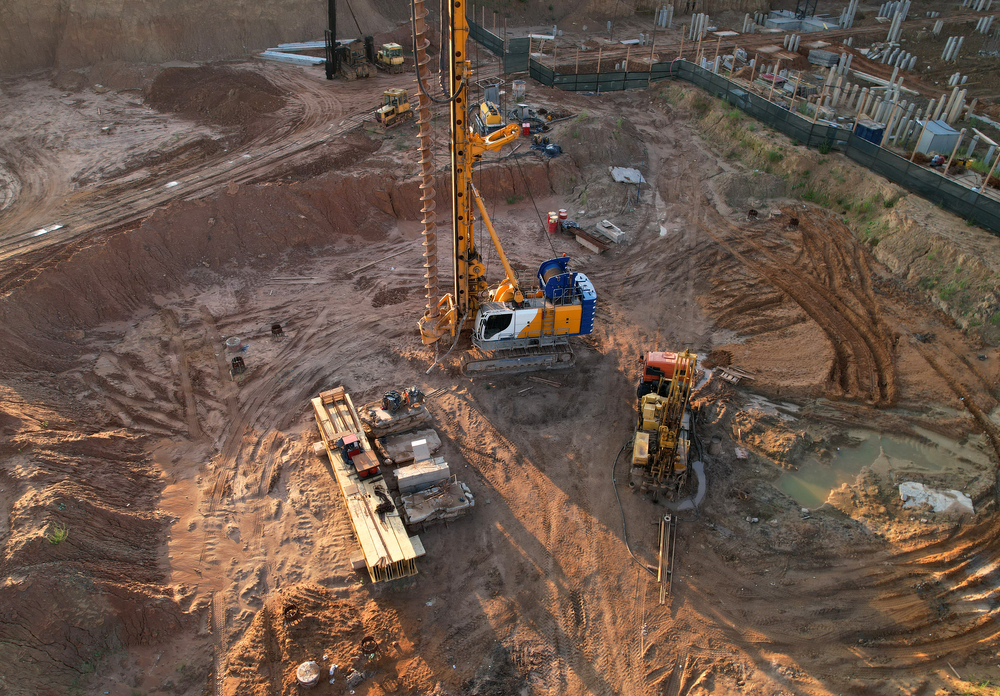3 Simple Techniques For Geotheta
3 Simple Techniques For Geotheta
Blog Article
The Ultimate Guide To Geotheta
Table of ContentsSome Of GeothetaSome Ideas on Geotheta You Need To KnowThe smart Trick of Geotheta That Nobody is DiscussingGeotheta for DummiesGet This Report on Geotheta

They carry out site examinations, accumulate examples, execute laboratory tests, and evaluate information to assess the suitability of the ground for building projects - Geo Tech Engineer. Based upon their searchings for, geotechnical engineers offer recommendations for foundation layout, slope stability, retaining structures, and mitigation of geotechnical risks. They collaborate with various other specialists, such as designers, structural designers, and building teams, to guarantee that geotechnical factors to consider are incorporated right into the overall task layout and implementation
By evaluating the behavior and properties of soil and rock, they can identify prospective geotechnical threats such as landslides, dirt settlement, or slope instability. Their expertise helps prevent failings or accidents that might threaten lives and residential or commercial property. Here are some in-depth obligations and duties of a geotechnical engineer: Website Investigation: Geotechnical designers conduct website examinations to gather information on subsurface conditions.
They analyze the information to comprehend the homes and behavior of the soil and rock, including their toughness, leaks in the structure, compaction features, and groundwater problems. Geotechnical Analysis and Design: Geotechnical engineers evaluate the data collected during site examinations to assess the security and viability of the site for building projects. They do geotechnical calculations and modeling to examine elements such as bearing capability, negotiation, incline security, lateral planet stress, and groundwater flow.
The Greatest Guide To Geotheta
Foundation Style: Geotechnical designers play a critical duty in creating foundations that can safely sustain the designated framework. They assess the soil conditions and tons requirements to figure out the appropriate foundation type, such as superficial structures (e.g., footings), deep structures (e.g (https://www.cheaperseeker.com/u/geotheta)., piles), or specialized techniques like dirt enhancement. They think about elements such as settlement limitations, bearing ability, and soil-structure communication to develop optimum foundation layouts
They examine building strategies, monitor website activities, and conduct area evaluations to validate that the style recommendations are adhered to. If unexpected geotechnical issues develop, they assess the scenario and supply recommendations for removal or modifications to the layout. Danger Analysis and Mitigation: Geotechnical engineers analyze geotechnical risks and threats related to the task site, such as landslides, liquefaction, or dirt disintegration.

Collaboration and Interaction: Geotechnical designers work very closely with other specialists entailed in a task, such as architects, structural designers, and construction groups. Effective communication and cooperation are necessary to integrate geotechnical factors to consider into the general task design and building and construction process. Geotechnical engineers provide technical knowledge, solution queries, and guarantee that geotechnical needs are met.
Some Known Incorrect Statements About Geotheta
Right here are some kinds of geotechnical designers: Structure Designer: Structure designers specialize in developing and analyzing structures for structures. They examine the dirt problems, tons demands, and site qualities to figure out one of the most appropriate structure kind and layout, such as superficial foundations, deep foundations, or specialized techniques like heap structures.
They review the aspects affecting incline stability, such as dirt properties, groundwater problems, and incline geometry, and establish techniques to avoid slope failures and reduce threats. Earthquake Designer: Earthquake engineers specialize in examining and making structures to hold up against seismic forces. They examine the seismic hazard of a website, evaluate dirt liquefaction potential, and establish seismic layout requirements to ensure the security and strength of structures throughout earthquakes.
They do field screening, accumulate examples, and examine the gathered data to characterize the soil properties, geologic formations, and groundwater conditions at a site. Geotechnical Instrumentation Designer: Geotechnical instrumentation engineers concentrate on surveillance and determining the habits of soil, rock, and structures. They install and keep instrumentation systems that keep track of variables such as dirt settlement, groundwater levels, slope motions, and structural displacements to examine efficiency and offer my explanation early cautions of prospective issues.
Things about Geotheta
They conduct examinations such as triaxial tests, loan consolidation tests, direct shear examinations, and permeability examinations to gather data for geotechnical analysis and style. Geosynthetics Engineer: Geosynthetics designers specialize in the style and application of geosynthetic materials, such as geotextiles, geogrids, and geomembranes. They utilize these products to boost soil security, strengthen slopes, offer drain services, and control disintegration.
They have a tendency to be investigatory people, which suggests they're intellectual, introspective, and analytical. They are curious, systematic, sensible, analytical, and sensible. Some of them are likewise social, indicating they're kind, generous, cooperative, individual, caring, helpful, empathetic, skillful, and pleasant - Geo Tech Engineer.
In the office atmosphere, geotechnical designers make use of specialized software application tools to do estimations, produce layouts, and examine data. They prepare reports, review task requirements, connect with customers and group participants, and coordinate project tasks. The office setting supplies a favorable atmosphere for research study, analysis, and cooperation with various other experts entailed in the project.
How Geotheta can Save You Time, Stress, and Money.
They regularly check out project websites to conduct website investigations, evaluate geotechnical conditions, and collect data for analysis. These visits involve taking a trip to various places, often in remote or tough terrains. Geotechnical engineers might do dirt sampling, conduct examinations, and monitor building and construction activities to make sure that the geotechnical facets of the job are being executed properly.
Geotechnical designers also function in specialized geotechnical research laboratories. In these facilities, they carry out experiments, execute tests on dirt and rock samples, and analyze the design residential properties of the materials. Geotechnical laboratory designers function extensively in these environments, handling screening tools, running instruments, and taping information. They team up with various other laboratory team to ensure precise and dependable screening outcomes.
Report this page